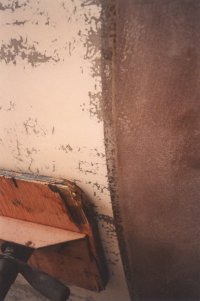Enough Helpers, Right Tools, Planning....
Good Advice to have some helpers for the application. A friend of mine did a bottom strip of his C&C 34 and got into the laminate in many places. They set up a production line, as it were, to do the epoxy and biax. I believe that there may have been four people at the height of the effort. Two minimum. Batches of epoxy mixed, precut cloth/biax laid out on tables, grooved rollers, plastic spreaders, etc.
Everyone in tyvec suits and face shields...
The result was beautiful, but there were several weekends of dawn to dusk labor for the crew.
Loren
That seems like a lot of thickness you will build up. FYI I used three layers of 1708 biaxial fabric when I recored the deck to replace the top skin. And I probably only needed two. You might get a sample of the material and experiment with it before you purchase enough to cover the entire bottom three times! The stuff soaks up a lot of epoxy too and is a real pain to wet out unless the temps are nice and warm, and then you don't have much time to install it before the epoxy kicks. You'll probably want the slowest hardener available (West Tropical) if you are working when the temps are warm. And some helpers to mix and spread the massive amounts of epoxy! Good luck and keep us posted. I will be interested to see what techniques will work best for you. Too bad you can't flip the boat over and work on it upside down!
Good Advice to have some helpers for the application. A friend of mine did a bottom strip of his C&C 34 and got into the laminate in many places. They set up a production line, as it were, to do the epoxy and biax. I believe that there may have been four people at the height of the effort. Two minimum. Batches of epoxy mixed, precut cloth/biax laid out on tables, grooved rollers, plastic spreaders, etc.
Everyone in tyvec suits and face shields...
The result was beautiful, but there were several weekends of dawn to dusk labor for the crew.
Loren
Last edited:

